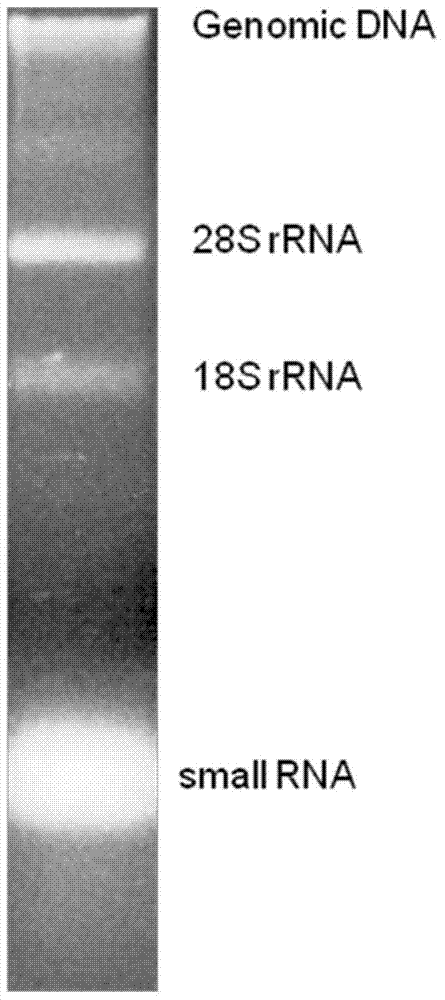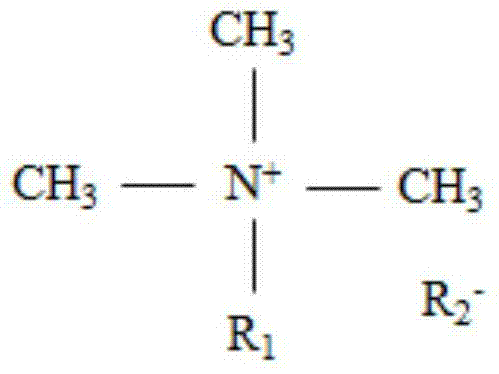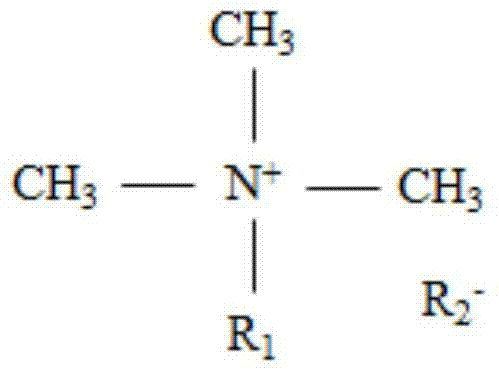Method for extracting ribonucleic acid from blood
A ribonucleic acid and blood technology, applied in the field of nucleic acid purification in biology, can solve the problems of high cost and low process efficiency, and achieve the effects of good integrity, high purity and efficient extraction process
- Summary
- Abstract
- Description
- Claims
- Application Information
AI Technical Summary
Problems solved by technology
Method used
Image
Examples
Embodiment 1
[0037] (1) Add 400 microliters of rapid cell lysis solution to 100 microliters of human whole blood sample, the lysis solution contains 0.5% by weight and volume of dodecyltrimethylammonium chloride, and mix the mixture thoroughly , And let the mixture stand for 20 minutes at room temperature to form a precipitate of dodecyltrimethylammonium chloride and ribonucleic acid;
[0038] (2) Centrifuge the sediment in (1) with a centrifugal force of 7000g and a centrifugal time of 8 minutes to remove the upper layer solution after centrifugation and retain the sediment;
[0039] (3) Add 500 microliters of nuclease-free water to the precipitate in (2), and mix thoroughly; among them, because nuclease will destroy ribonucleic acid, the reagent for cleaning the precipitate cannot contain nuclease, which can be used in the field Commonly used cleaning agents, or pure water, the purpose of cleaning is to remove other impurities in the sediment, such as proteins;
[0040] (4) Centrifuge the sedi...
Embodiment 2
[0046] (1) Add 300 microliters of fast cell lysate to 100 microliters of mouse whole blood sample, the lysate contains 0.2% tetradecyltrimethylammonium chloride and 5% Tween by weight and volume. -20. Mix the mixture thoroughly, and let the mixture stand for 15 minutes at room temperature to form a precipitate of tetradecyltrimethylammonium chloride and ribonucleic acid;
[0047] (2) Centrifuge the sediment in (1) with a centrifugal force of 5000g and a centrifugal time of 10 minutes to remove the upper layer solution after centrifugation and retain the sediment;
[0048] (3) Add 400 microliters of nuclease-free water to the precipitate in (2) and mix well;
[0049] (4) Centrifuge the sediment in (3) with a centrifugal force of 5000 g and a centrifugal time of 10 minutes to remove the upper layer solution after centrifugation and retain the sediment;
[0050] (5) Add 50 microliters of ribonucleic acid purification solution to the precipitate in (4). The purified solution contains 6% b...
Embodiment 3
[0053] (1) Add 500 microliters of fast cell lysate to 100 microliters of human whole blood sample, the lysate contains 0.7% cetyltrimethylammonium bromide and 10% TritonX- 100. Mix the mixture thoroughly, and let the mixture stand for 30 minutes at room temperature to form a precipitate of cetyltrimethylammonium bromide and ribonucleic acid;
[0054] (2) Centrifuge the sediment in (1) with a centrifugal force of 10000g and a centrifugal time of 5 minutes to remove the upper layer solution after centrifugation and retain the sediment;
[0055] (3) Add 600 microliters of nuclease-free water to the precipitate in (2) and mix well;
[0056] (4) Centrifuge the sediment in (3) with a centrifugal force of 10000g and a centrifugal time of 5 minutes to remove the upper layer solution after centrifugation and retain the sediment;
[0057] Repeat (3) and (4) twice, until the precipitate does not show obvious red;
[0058] (5) Add 150 microliters of ribonucleic acid purification solution to the pr...
PUM
 Login to View More
Login to View More Abstract
Description
Claims
Application Information
 Login to View More
Login to View More - R&D Engineer
- R&D Manager
- IP Professional
- Industry Leading Data Capabilities
- Powerful AI technology
- Patent DNA Extraction
Browse by: Latest US Patents, China's latest patents, Technical Efficacy Thesaurus, Application Domain, Technology Topic, Popular Technical Reports.
© 2024 PatSnap. All rights reserved.Legal|Privacy policy|Modern Slavery Act Transparency Statement|Sitemap|About US| Contact US: help@patsnap.com










